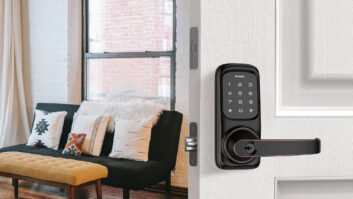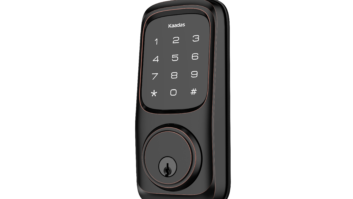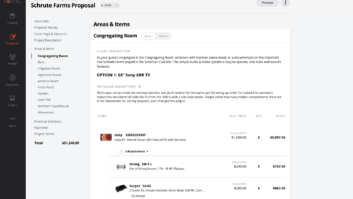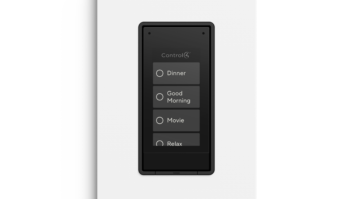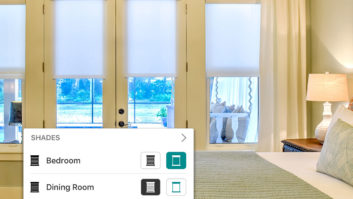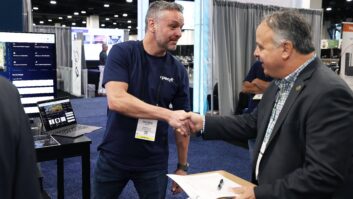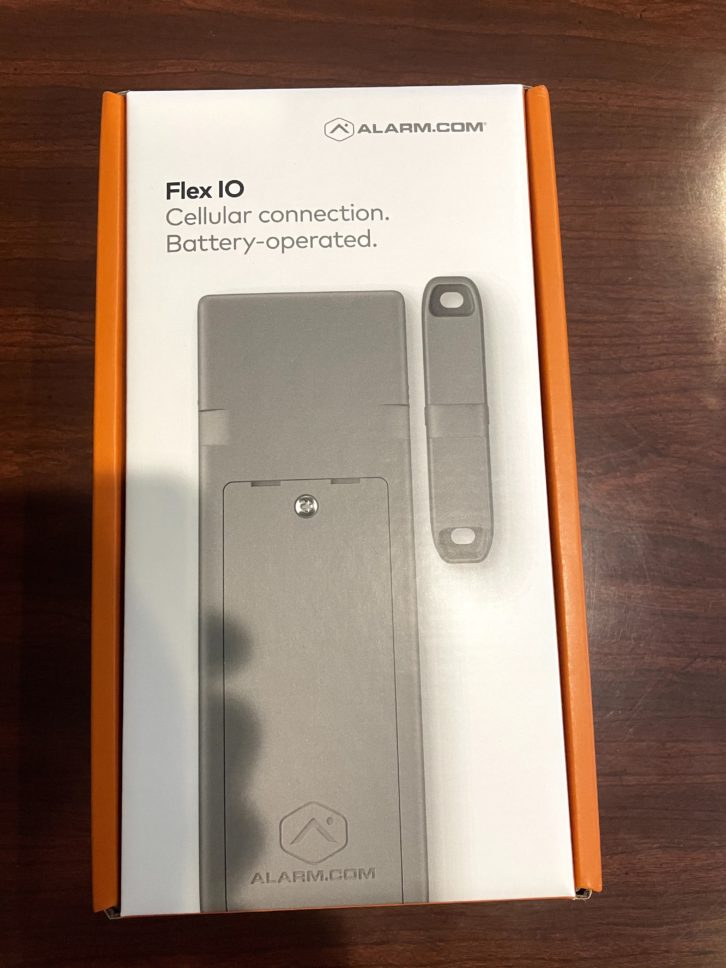
I have a confession to make: I’m still a nerd. I love our industry and all its shiny objects. I got to tap into my inner geek big time last week when Alarm.com sent me its new Flex IO sensor. It’s a cellular connected contact/relay bristling with functionality. It’s not the kind of thing I’m going to excitedly tell my wife about, but you, dear reader, are a different story. You love this stuff just as much as me.
Related: Hands On With Alarm.com’s 8-Channel Stream Video Recorder with HDMI Output
I’d heard about the Flex IO in late 2020 while reading through Alarm.com product announcements. In short, there are a ton of locations out there beyond the reach of a traditional security system or Wi-Fi signal. Enter the Flex IO, which enables monitoring of far off assets like gates, outbuildings, and relay control over machinery. I got the concept right away and asked my rep to send one over. He obliged and I began unboxing.
Unboxing
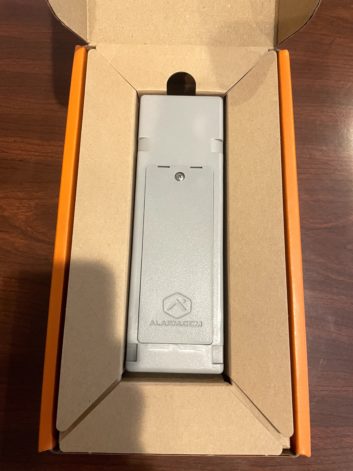
As you’d expect, nothing much to see here. The Flex IO is designed with the professional installer in mind, so think brown cardboard and minimal gloss. Alarm.com understands it’s all about no muss, no fuss, and getting the box open quickly.
The Flex IO is about the size of a Snickers bar and powered by 4 AA batteries (included in the box, life expectancy of two years). You can feel Alarm.com’s previous battery-powered device R&D experience shining through in the pro-grade lithium batteries.
Installation
I have a shed behind my backyard that is beyond the reasonable reach of a wireless sensor from my existing security system and hardwiring would be too challenging (in other words, pretty much exactly what Alarm.com had in mind when they built this thing). I knew the shed doors didn’t seat precisely and was excited to see a beefy rare earth magnet cocooned in epoxy included inside the box. There’s also an option to hardwire an outboard contact sensor back to the Flex IO on a Dry Contact loop. This would be a great choice for a recessed or unusual sensor installation (typically found on gates or overhead doors).
I screwed both Flex IO and magnet to the shed door using my own screws (I like that Alarm.com stays out of the fastener game here). There are numerous mounting options, and the magnet can trigger the internal reed switch on its top or either side. I was starting to understand the “Flex” moniker.
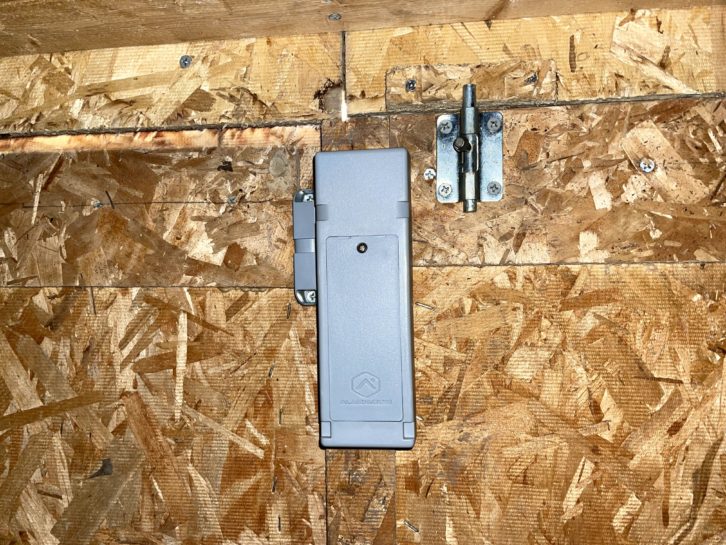
I didn’t land anything on the relay terminals, but it was really cool to envision installing the Flex IO in the middle of nowhere and triggering something big (like a robot hurling sharks with laser beams attached to their foreheads) with the relay. That kind of functionality is possible today, but not easy to pull off. Alarm.com just made all sorts of rural installations easy. Farmers can monitor gates, activate far off machinery, or AirBNB-proof their land using the Flex IO. There’s also a hardwired set of terminals if power is nearby (and a requirement if you want to use the relay outputs).
Also tested by Henry Clifford: Hands On – ClareOne Panel
I opened up the Alarm.com app and ran through the setup. It was a breeze. The Flex IO shows up as a “Flex Sensor” on the Alarm.com app and is capable of being added by the end customer to any new or existing automation rules. I set mine up to receive a notification anytime the shed is opened. Just understanding when my shed is being accessed gives me tremendous peace of mind that I didn’t have before. Take that, bored neighborhood teenagers!
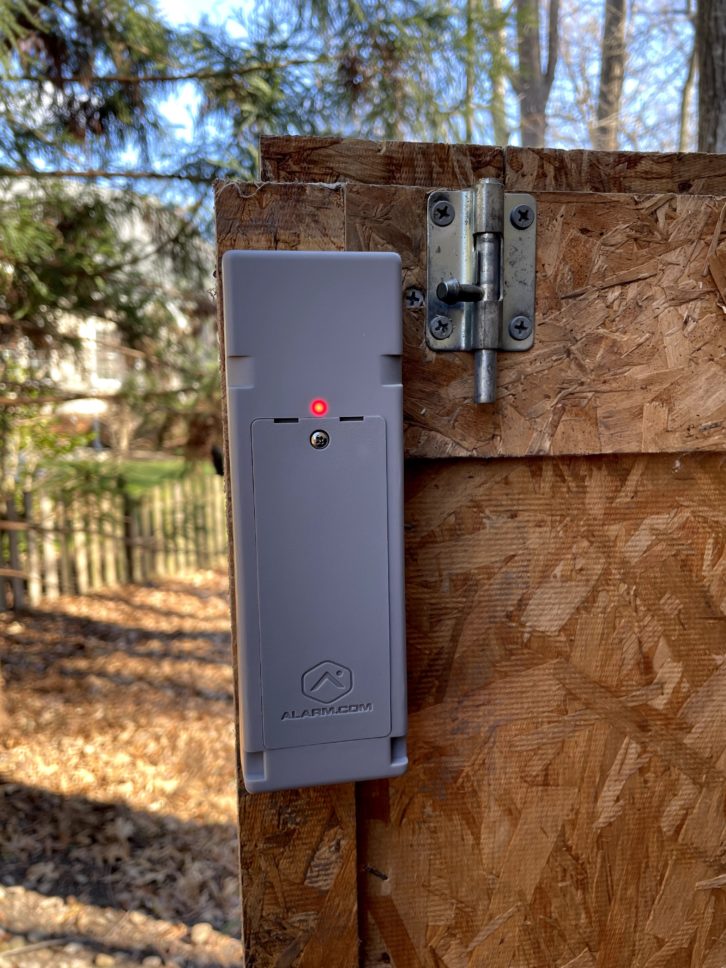
Final Report
The Flex IO may not be the sexiest piece of tech introduced this year, but it’s going to end up being one of the most useful when it comes to solving remote monitoring challenges, especially in rural areas. With an average selling price under $200 and a small monthly increase that can be easily marked up and sold to end customers, we’ve already added the Flex IO to our toolkit at Livewire and have moved on to solving the rest of our 99 problems.
Stay frosty, and see you in the field.

